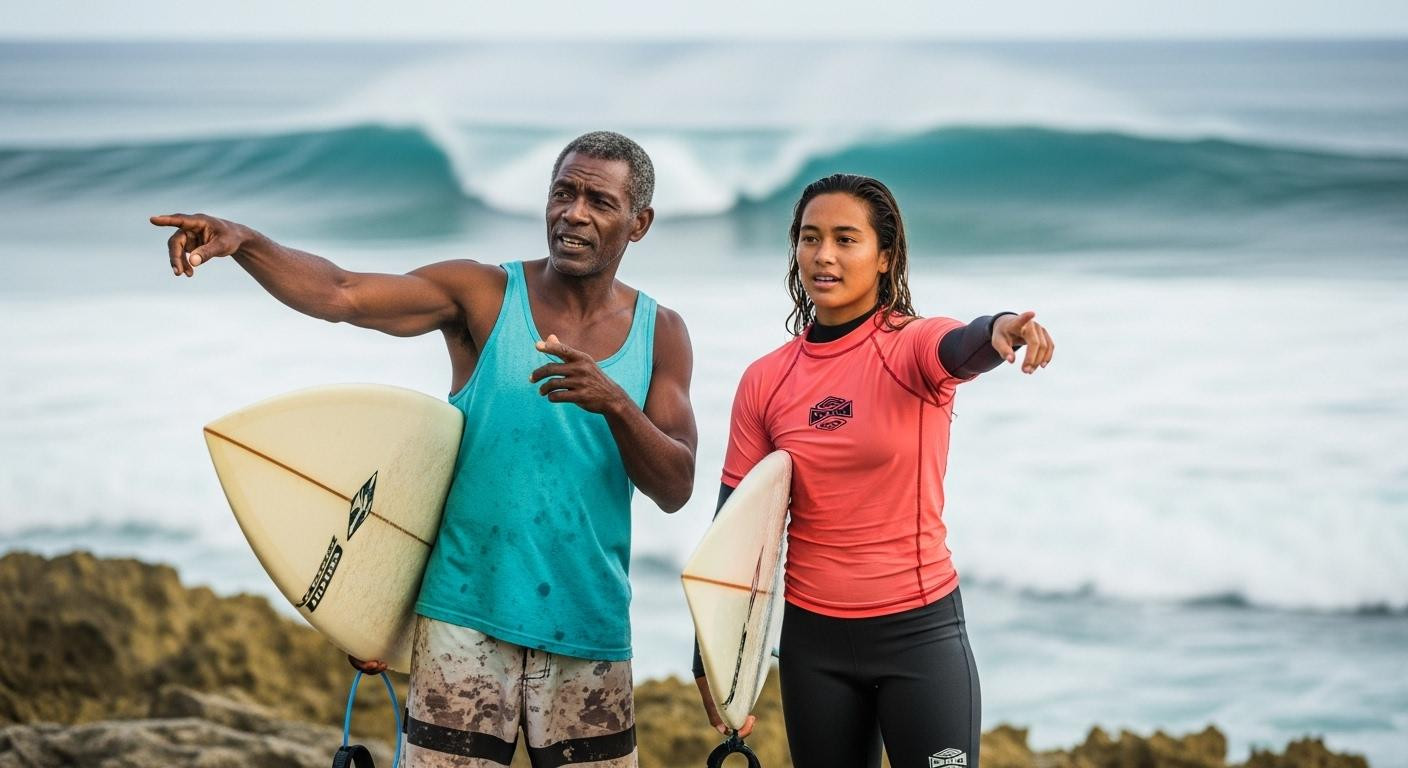Dawn at Bull Bay, six weeks after Hurricane Melissa swept Jamaica with 175 mph winds. The tourist buses haven’t returned to this stretch of coastline. Local watermen gather with weathered longboards, reading swells that speak in a language only generations understand. This isn’t the Jamaica of resort brochures. This is the island that emerges when storms strip away commercial veneer, revealing surf culture rooted in decades of Caribbean wave wisdom.
What adventurous travelers discover here transforms understanding of both surfing and island authenticity. The ocean speaks differently now. Deeper swells, longer intervals, patterns only local knowledge deciphers.
When storms reveal what resorts hide
Hurricane Melissa’s departure created unexpected access to Jamaica’s authentic surf lineage. Tourism infrastructure paused throughout October and November 2025. Local surf wisdom stepped forward. Boston Bay’s elderly watermen, men who’ve read these reefs for 40+ years, suddenly became the only guides available.
Oceanographers studying Jamaica’s coastal features explain the island’s unique position. Steep underwater topography focuses hurricane energy into powerful, rideable waves. Unlike gradual continental shelves elsewhere, Jamaica’s reef systems amplify storm swells dramatically. Professional surfers note the specialized skills required for these chaotic patterns.
Cost context reveals surprising advantages. Board rentals average $40 per day. Lessons with authentic local experts cost $90 compared to $120+ commercialized Hawaii equivalents. Resort accommodations with backup power provide safe bases for post-storm surf adventures.
The science behind post-storm surf magic
Storm-generated waves travel thousands of miles across open ocean. They organize into long-period swells with 12-20 second intervals versus typical 6-8 seconds. Jamaica’s reef breaks filter this energy into powerful, clean faces. Surfline data confirms bigger, more challenging conditions attracting experienced surfers.
How hurricane swells transform wave quality
Scientific measurements show dramatic improvements in wave consistency post-Melissa. Water temperatures remain steady at 78°F year-round. Reef systems create natural wave pools where storm energy becomes rideable power. Local guides understand which breaks handle different swell directions safely.
The 72-hour water safety window
Health authorities mandate waiting periods after tropical storms. Storm runoff introduces harmful bacteria into coastal waters. Illness risk increases 10% per additional 2.5 hours of water exposure during contaminated periods. Local surf culture respects this wisdom naturally.
Experienced watermen explain the ocean’s cleansing cycle. “Water needs time to heal itself,” one Boston Bay veteran notes. Emergency preparedness items become essential for post-storm surf safety protocols.
Mental health benefits meet cultural immersion
Research from San Diego State University demonstrates surf therapy’s measurable impacts. PTSD anxiety reduces 25% over eight weeks of structured surf programs. Female participants show stronger immediate benefits from challenging water conditions. Post-storm Jamaica offers uniquely supportive environments for therapeutic surfing.
Surf therapy data from Jamaica’s waves
Small group instruction creates ideal conditions for mental health benefits. Experienced local mentors provide personalized attention impossible in crowded commercial settings. Challenging conditions require complete present-moment focus. Adrenaline release combined with endorphin boost creates measurable mood enhancement lasting days after sessions.
Morgan, a 32-year-old from NYC, reported improved balance and stress relief. Her transformation occurred over five sessions spanning two weeks. The combination of saltwater immersion and physical challenge proved more effective than traditional therapy approaches.
Learning from generational wave wisdom
Jamaican watermen teach reef reading through family traditions spanning decades. Navigation of rip currents follows techniques passed between generations. Storm pattern interpretation represents cultural knowledge unavailable in surf schools elsewhere. This isn’t commodified instruction but authentic cultural transmission.
Visual documentation reveals how post-Melissa conditions create mentorship opportunities absent during peak tourist seasons. Respect comes before technique in traditional Jamaican surf education.
Practical reality check
Surf safety experts emphasize crucial timing distinctions. Never paddle out during active storm surges. The invitation exists post-storm, not during dangerous weather events. Chaotic wave patterns and unpredictable rip currents demand serious respect from all participants.
Proper timing requires 72+ hours after rainfall ends. Local guide hiring becomes essential rather than optional. Protective gear costs $150-300 but transforms adventure from reckless to transformative. GPS tracking devices at $120 for SafeSurf models provide additional safety margins in remote locations.
Jamaica’s 30-40% cost savings versus Hawaii only matter when approached with cultural humility. Fitness preparation becomes crucial for handling powerful post-storm conditions safely.
Your questions about surfing Jamaica’s post-storm waves answered
When exactly is it safe to surf after Hurricane Melissa passed?
Minimum 72 hours after last rainfall, confirmed by local authorities and water quality testing. Best window occurs 5-14 days post-storm when swells remain elevated but water contamination clears completely.
Do I need previous surfing experience for post-storm conditions?
Yes, intermediate minimum skills required. Comfortable handling overhead waves and strong swimming abilities are essential. Storm swells aren’t beginner territory. Local guides assess skills honestly before allowing ocean entry.
What makes Jamaica different from other Caribbean post-storm surf destinations?
Unique reef geology amplifies storm energy into rideable waves. Cultural depth of local surf wisdom passed through generations. Lower costs at $90 lessons versus $120+ elsewhere. Female-friendly adventure culture emerging from traditional watermen communities.
Dawn at Bull Bay, six weeks after Melissa passed through these waters. You paddle out beside a weathered Jamaican waterman reading reefs since childhood. Swell lines approach, organized chaos only local knowledge deciphers. Your first wave rises, carrying generations of island wisdom beneath your feet.
